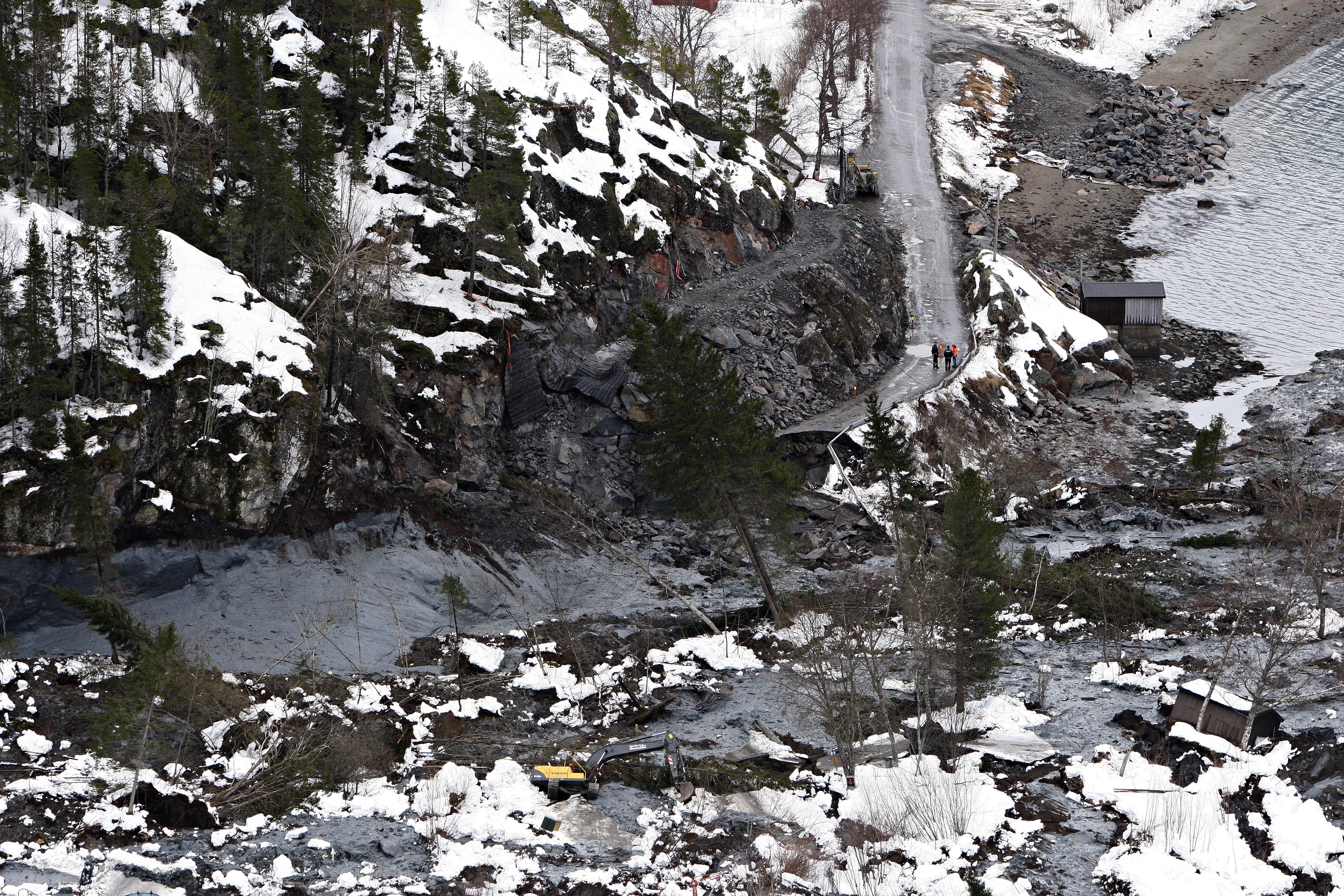
In Kattmarka, buildings and a stretch of highway were washed away by the clay sludge. © NGI
Norway experiences dangerous landslides due to its clay-rich soil. For her Master's thesis in civil engineering at EPFL, Mathilde Metral outlined steps that the country's geotechnical engineers can take to improve the predictive computer model they're currently developing.
The heavy rains that sweep across Europe with growing frequency can be particularly damaging in Norway, where the clay-rich soil is susceptible to landslides. As part of her Master's thesis in civil engineering, Mathilde Metral worked with the Norwegian Geotechnical Institute (NGI) to test the computer model that engineers there are developing to predict clay landslides. "I wanted to apply geotechnical concepts to help prevent natural disasters," she says. "My interest in this topic stems from the challenge of investigating these complex phenomena as well as from the mountaineering activities I enjoy doing." Metral teamed up with EPFL's Laboratory of Soil Mechanics (LMS), headed by Prof. Lyesse Laloui, for her research. The suggestion to work with NGI - known around the world for its expertise in clay soils - came from Alessio Ferrari, a research associate at LMS and Metral's thesis advisor.
Norway has experienced three major landslides in the past 12 years due to the unstable nature of its quick clay. The first event took place in Kattmarka on 13 March 2009, when a landslide carried off several buildings and one section of a highway. Then, on 10 November 2016, a flowing mass of quick clay killed three construction workers in Sorum. And on 30 December 2020 in Gjerdrum, a village with 5,000 residents northeast of Oslo, a landslide leveled 30 homes. That disaster left nine dead, with one person still missing and around 1,000 people having to be evacuated.
A technological challenge
Engineers in Norway have been working for several years to develop a computer model that can predict such catastrophes. But the mechanisms involved are complex, and modeling them involves quite a bit of research, trial and error. Metral's Master's thesis entailed testing the robustness of the engineers' model by seeing how well it could replicate the 2009 and 2016 landslides. She performed back calculations, running the model based on the parameters used at the time to determine what the model would have predicted and what was still needed for an accurate prediction.
Since Norway's climate is changing and heavy rains are removing the salt that's naturally present in the soil, the soil can easily collapse like a house of cards.
"Norway's clay slopes are stable only in marine environments. But since Norway's climate is changing and heavy rains are removing the salt that's naturally present in the soil, the soil can easily collapse like a house of cards," says Metral. "It's a real threat for nearby houses and infrastructure." Much of what makes quick-clay landslides so difficult to predict is that engineers must apply the fundamental laws of fluid mechanics to classical geotechnical substances. The range of variables they have to factor into their equations include soil topography and density, yield stress in the soil's intact and fluid states, and the quality of soil-composition data obtained during ground surveys.

The limitations of software
"I was able to identify where the deposition areas were for the 2009 and 2016 events and calculate the likely time interval for the landslides," says Metral. "The NGI model did a good job of replicating the Kattmarka one. But for Sorum, it was hard to know what the soil conditions were at the time, because the topographic maps there are older and construction work was going on at the time." By testing effects that hadn't been studied previously and that aren't yet operable, Metral helped the NGI engineers refine their selection criteria and better understand the limitations of their software.
The impact of landslides will likely grow in susceptible areas.
These kinds of predictive models are becoming increasingly important as global warming gains pace, according to Ferrari: "Global warming is amplifying phenomena such as extreme rainfall events, permafrost degradation and increased snow melting. As a consequence, the impact of landslides will likely grow in susceptible areas. By developing and refining modeling software - like what Mathilde did for her Master's thesis - we will be better able to anticipate the potential consequences of landslides and mitigate the related risks."






